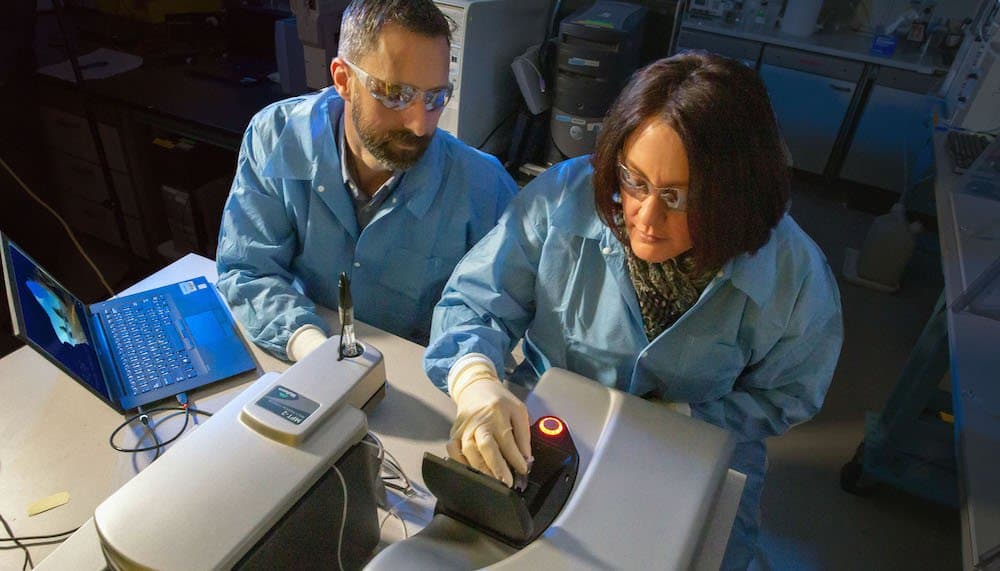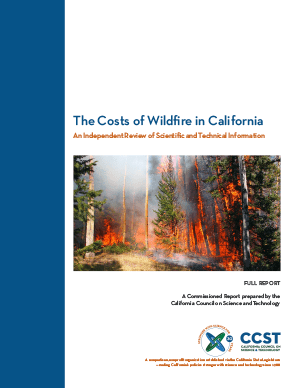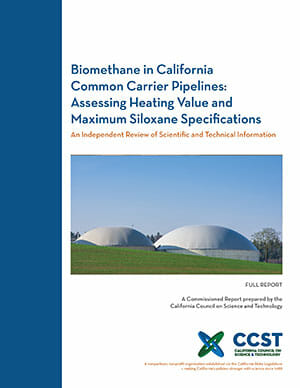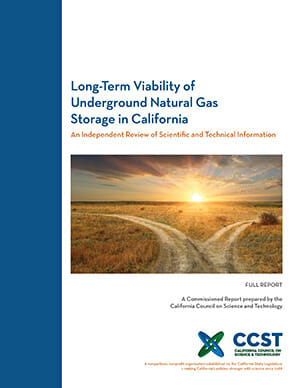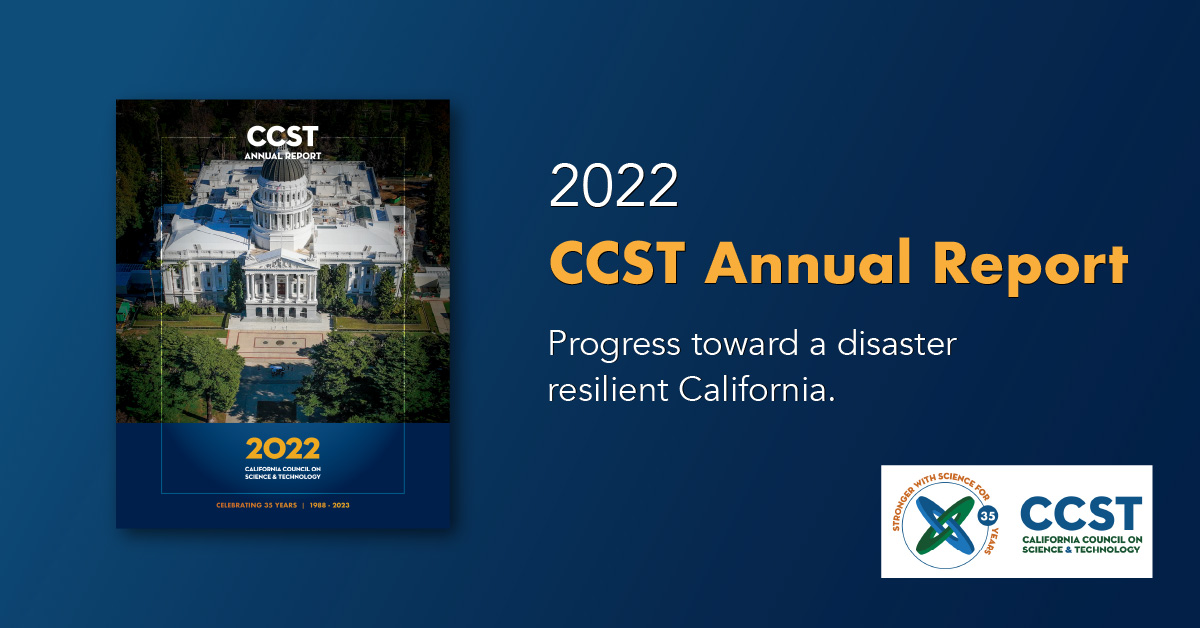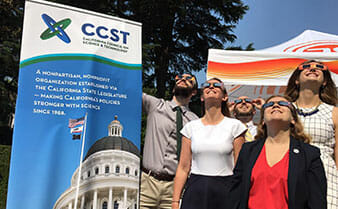2021 Impact Report
California's Federal Labs & Research Centers
Six federal laboratories and science centers in California have formal partnerships with CCST – the State’s premier resource to connect decision makers with leading scientists in California and beyond – as Federal Laboratory Partners. This Impact Report offers a glimpse of the resources and expertise that each lab can offer to California’s decision makers.
Each federal entity boasts a government relations team able to assist local, state, and federal offices. Together with CCST, these liaisons serve as a resource for community members and officials who want to learn more about federal labs and their broader impact for California. CCST helps facilitate links across the capabilities and talents of these labs and centers, and can help Members and Capitol staff navigate the tremendous resources spread across federal labs and science centers in California.
With this report, we invite you to learn how our federal labs and research centers help make California stronger with science and technology.

Dear Fellow Californians:
As a state whose motto proclaims proudly—Eureka!—California’s bounty of advanced research institutions is decidedly appropriate. Alongside academic powerhouses such as the University of California, Stanford, and Caltech, we also take pride in our unrivaled collection of federal laboratories and research centers.
Federal labs and research centers are set apart from other institutions by bringing to bear large-scale, mission-based projects and facilities on some of humanity’s most pressing and difficult scientific questions. They represent billions of dollars of federal research investment, providing a wealth of knowledge and expertise that California can draw on. These labs take us deep inside the genetic code, support the foundations of our energy and national security, and even launch us toward the stars.
Today, California is at a crossroads. Complex and intersecting disasters, including wildfires, climate change, and the ongoing COVID-19 pandemic, are radically disrupting the ways in which Californians live and work, and threatening catastrophic loss of life and economic impacts. California’s federal labs and research centers are leveraging their world class expertise and technologies—as well as passionate researchers, students, and support staff—to invest in our resilience to disasters.
The unique nature of our federal labs and research centers puts them in an ideal position to pursue research and development in service of the public good. Whether it is an electricity grid infrastructure that is more resistant to disruptions from extreme weather events, satellite monitoring of developing wildfires to aid our first responders, or new technologies for purifying drinking water in the wake of an earthquake, the breakthroughs developed in these labs continue to benefit millions of Californians every year.
As California continues to move forward and confront big challenges, these labs and centers are ready to help. Here, we invite you to learn about just a few of the many ways that our federal labs and research centers are helping to make California—and the whole nation—more resilient.
Sincerely,
Amber Mace, PhD
CCST
Executive Director
Peter Cowhey, PhD
CCST Board Chair
UC San Diego
Terry Land, PhD
CCST Federal Lab Partners Chair Lawrence Livermore
National Laboratory
Accessing California’s Federal Labs
Why Tap into Federal Science?
Federal agencies such as DOE and NASA are uniquely positioned to contribute to California’s scientific conversation. They leverage the might of federally directed research resources and facilities — bringing mission-oriented research and scientific facilities that complement the wealth of expertise at University of California, California State University, Caltech, Stanford, and other campuses.
Federal research includes many focal areas that can directly inform policy questions at the state level. Federal labs can partner with state agencies and campuses to conduct studies vital for our understanding of natural and physical processes. These federal-state-university partnerships require time for planning and implementation, but they yield collaborations and important knowledge for lifetimes.
Each federal entity boasts a government relations team able to assist local, state, and federal offices. Together with CCST, these liaisons serve as a resource for community members and officials who want to learn more about federal labs and their broader impact for California.

The California Council on Science and Technology (CCST) is a nonpartisan, nonprofit organization established via Assembly Concurrent Resolution 162 in 1988. The resolution directed CCST “to respond to the Governor, the Legislature, and other entities on public policy issues related to science and technology.” To deliver independent advice to state policymakers, CCST engages science and technology (S&T) experts across California’s research enterprise, including through formal partnerships with the University of California (UC), California State University (CSU), California Community Colleges (CCC), Stanford, the California Institute of Technology (Caltech), and the six federal laboratory partners described above.
By connecting policymakers with leading scientists in California and beyond, CCST increases policymaker access to S&T advice that is informed by diverse expert perspectives. Over the past three decades, state leaders have requested CCST reports and expert briefings on many issues of policy importance, from natural gas storage safety to sustainable water futures. The connections we facilitate between policymakers and scientists also enhance the ability of our 11 Partner Institutions to transmit S&T information for the ublic good, including by expanding opportunities for experts to participate in the policy arena and by identifying questions that will drive future research and innovation.
In 2005, there was growing interest by state leaders to improve access to expertise found at federal laboratories and science centers across California, and engage them on issues affecting the Golden State.
The call for advice coincided with conversations and coordination already ongoing between CCST and several federal research institutions in California. CCST welcomed six new Partner Institutions.
Of the six institutions, four came from the U.S. Department of Energy: the Lawrence Berkeley National Laboratory, Lawrence Livermore National Laboratory, Sandia National Laboratories, and SLAC National Accelerator Laboratory; and two came from NASA: the Jet Propulsion Laboratory and the Ames Research Center.
In 2020, in recognition of a need for more agile science and technology advisory frameworks for the state and the increasing threat of natural disasters in California, CCST launched a Disaster Resilience Initiative, focused on increasing the delivery and responsiveness of the science advisory support provided by CCST’s science and technology experts to California policymakers. This five-year public-private partnership will convene diverse, interdisciplinary experts from throughout CCST’s network to address the State’s most urgent disaster resilience advisory needs through a series of needs- finding workshops, briefings to policymakers, advisory meetings, and other engagements.
Policymakers should contact CCST:
• During policy development, to obtain data and advice from subject area experts.
• During the legislative process, to find experts for testimony at policy, fiscal, select committee, and other hearings.
• During implementation and regulatory enforcement, accessing current science to review standards, technologies, efficacy, and relevance.
• When analyzing natural disasters and human- engineered catastrophes and planning for prevention, preparation, response to, and recovery from these events.
• If your office is considering legislation, regulations, or other work products that you believe would benefit from science and technology expertise, or if you are seeking data and advice to strengthen your decisions with science, contact CCST — and we will help you navigate the bounty of top scientific minds available to California.
How CCST Can Help
CCST can help Legislators, appointed officials, and Capitol and executive branch staff navigate the tremendous resources spread across federal labs and science centers in California.
CCST’s access to the Federal Laboratory Affiliates has resulted in several high-impact reports that have been useful to state leaders, delivering timely, nonpartisan, scientific analysis on complex issues. Examples include:
Federal Labs Research Benefiting California
In Service to the Nation and Its States
California has a long history of dealing with a wide variety of disasters and threats, from wildfires and earthquakes to pandemics and bioterrorism. Because of their state-of-the-art facilities, longstanding collaborations, and cross-disciplinary organization, the federal labs in California are uniquely positioned to coordinate the large research projects needed to develop technologies and inform strategies to improve the state’s resilience.
Below is a small sample of the labs’ recent and ongoing research with major implications for how California prevents, prepares for, responds to, and recovers from disasters. This overview is not an exhaustive list of all projects and research areas at these institutions, nor does it represent all federal labs and science centers located here in California. However, these highlights do illustrate the amazing breadth of federal research and applications available to policymakers in Sacramento.
NASA Ames NASA Ames Research Center
NASA JPL NASA Jet Propulsion Laboratory
Berkeley Lab Lawrence Berkeley National Laboratory
LLNL Lawrence Livermore National Laboratory
Sandia/California Sandia National Laboratories/California
SLAC SLAC National Accelerator Laboratory
Preparing for Disasters
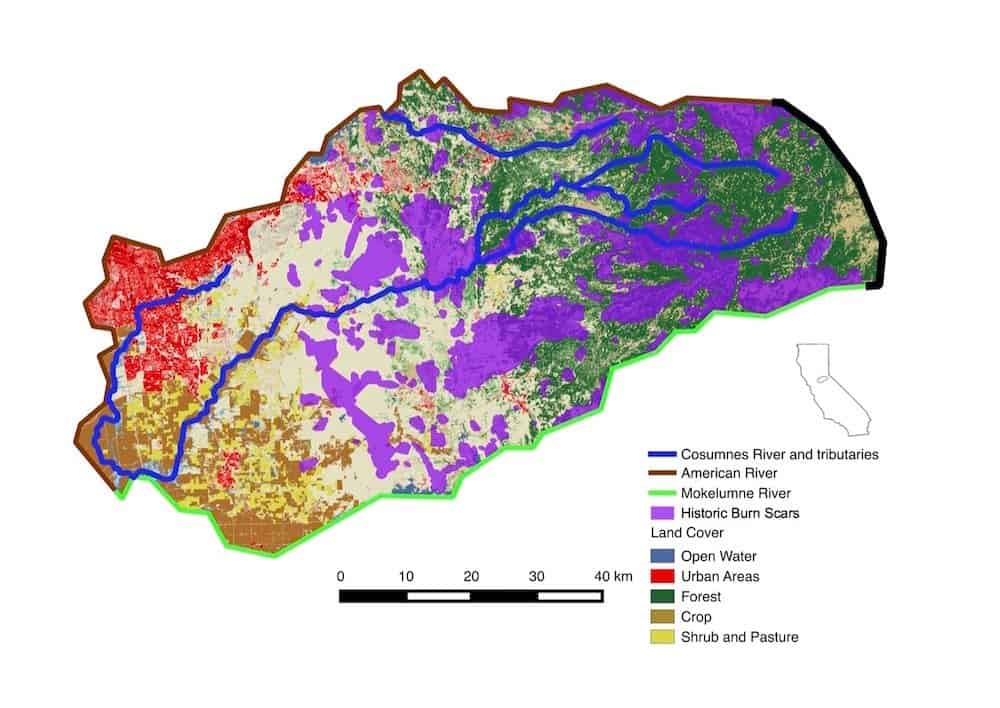
Mechanical thinning of old growth forests is an important strategy to reduce the risk of catastrophic wildfires in the wildland-urban interface. However, removal of low-value biomass is uneconomic, and most wood piles are burned. With support from CAL FIRE, Berkeley Lab is teaming up with other researchers to develop a mobile biorefinery that can process woody biomass and convert it into biopower, biofuels, and biochar with minimal carbon or airborne emissions. Unlike conventional biorefineries that require large-scale feedstock removal, this mobile unit can be transported by truck to regions where the biomass is located. This technology represents an important step toward a circular bioeconomy, as excess agricultural and forest residues can be converted into valuable products.

Building Resilient Infrastructure
Methane is one of the most potent greenhouse gases contributing to climate change, resulting from human activity. NASA JPL’s Next Generation Airborne Visible/ Infrared Imaging Spectrometer (AVIRIS-NG) has been flown across the state to identify fugitive methane emissions, as part of its California Methane Survey. Monitoring methane plumes, JPL researchers were able to detect leaks in infrastructure from agriculture, landfills, and oil and gas utilities. By sharing the data with facility operators to aid in repairing these leaks, this campaign has driven significant voluntary mitigation of methane emissions. Read More.
Event Spotlight: COVID-19
In December 2019, the novel viral respiratory illness, coronavirus disease 19 (COVID-19), quickly spread from China across the globe. The World Health Organization declared COVID-19 a pandemic in March 2020, and since then, all six federal laboratories have rapidly deployed their resources and research capacities to respond to the multifaceted public health crisis. These are just a small sample of the ways in which the labs and research centers stepped up to respond to the disaster.
International collaboration: Scientists at NASA Ames, LLNL and Berkeley Lab are contributing to the COVID-19 International Research Team (COV-IRT), an international community of scientists using public data to rapidly understand the virus and develop a vaccine and therapeutics.
Real Time Response and Monitoring
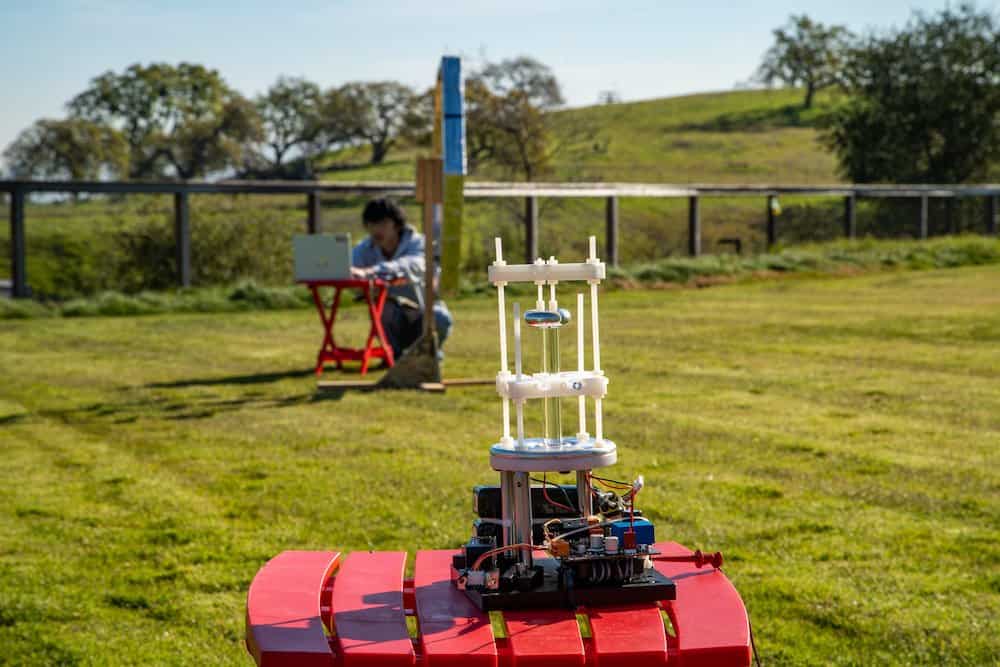
NASA JPL’s Advanced Rapid Imaging and Analysis (ARIA) project, a partnership with the California Institute of Technology, delivers timely data products for disaster response. ARIA combines near real-time GPS, radar, optical, and seismic observation with state-of-the-art processing to produce damage and flood maps. With satellite data that can see through clouds, ARIA has helped organizations like the UN World Food Programme monitor events, like flooding from the 2020 tropical cyclones in Bangladesh and India. From local California wildfires to the massive explosion in Beirut, ARIA’s openly-accessible maps, produced in collaboration with the Earth Observatory of Singapore, have been used to help identify severely damaged areas where assistance may be required. ARIA’s ground deformation maps have also been used to identify a complex web of fault ruptures and damage from the 2019 Ridgecrest, CA earthquakes.
Through NASA’s Small Business Innovation Research program, California’s Swift Engineering, with support from NASA Ames, has developed a high-altitude, long-endurance uncrewed aircraft to carry science instruments and other small payloads. It is designed to stay aloft for 30 days at 65,000 feet, and its recent first flight provided critical data to prove that design requirements were met. Such aircraft can complement satellites with data on regional scales, and NASA is exploring their use for Earth system science and disaster response. These platforms have the potential to provide imagery similar to a geostationary satellite. During or after a natural disaster, they could gather real-time data or provide a communications relay. Read More.
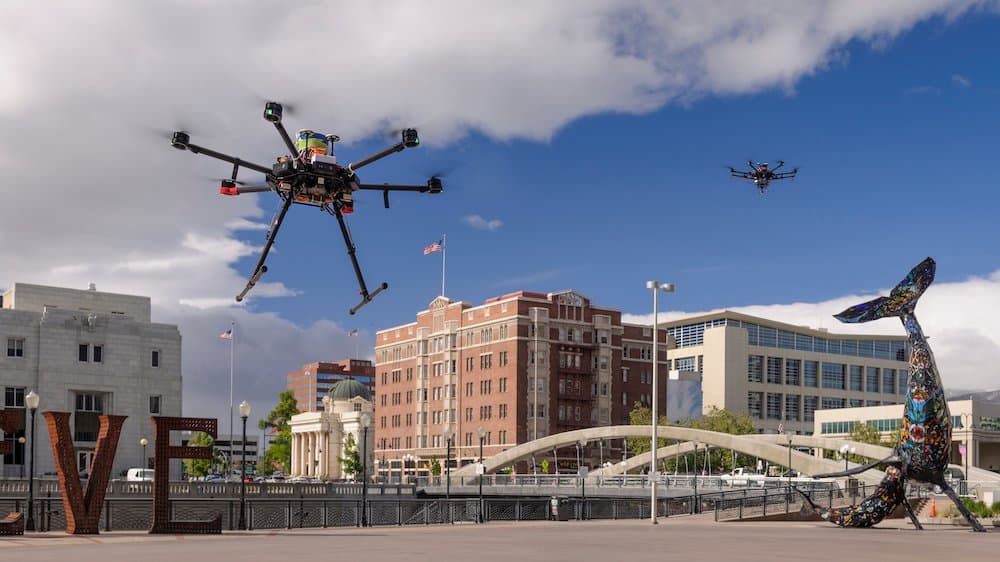
Rebuilding with Resilience

As part of LLNL’s Engineering the Carbon Economy Initiative and other energy programming, LLNL scientists have conducted a study to identify solutions to remove carbon from the atmosphere and help California meet its goal of achieving carbon neutrality by 2045. This comprehensive analysis outlines the costs, carbon removal potential, and important co-benefits of a suite of natural carbon removal strategies, biomass conversion technologies, and negative emissions technologies such as direct air capture. This report concludes that carbon neutrality is achievable, and can guide the State as it makes the required investments and policies. Read More.
